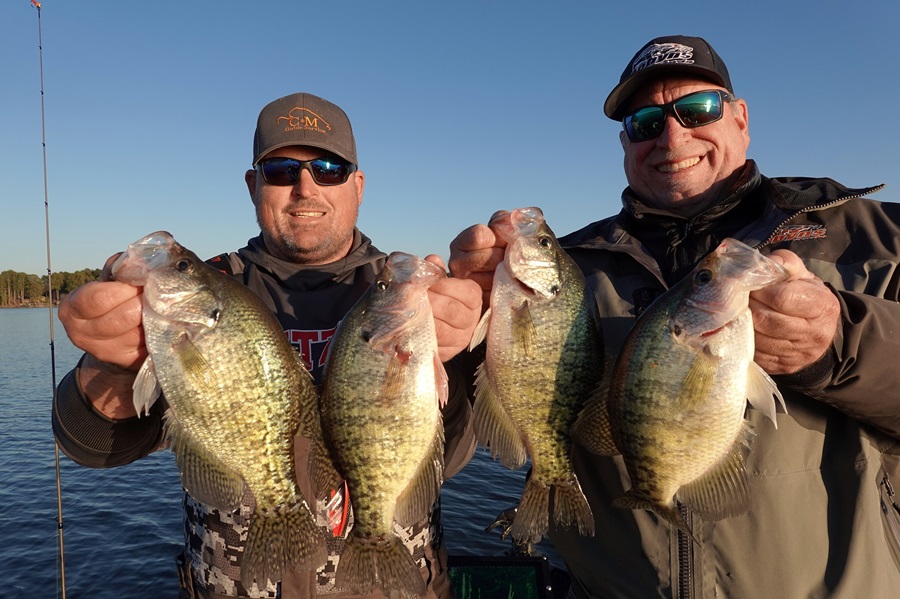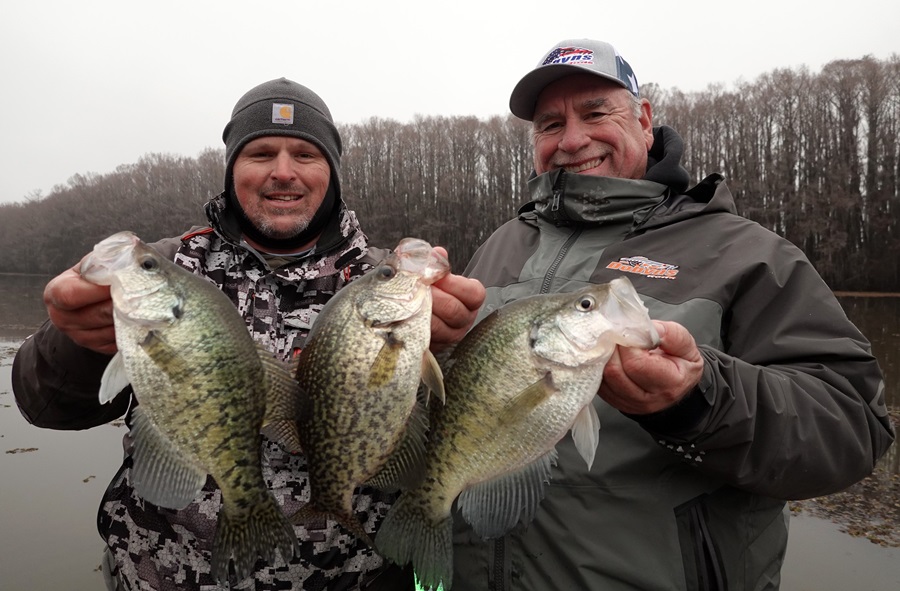 Gary Dobyns needs no introduction in the bass fishing world, as his many tournament wins and resume speak for themselves. Add in his famed bass rods, and he’s someone that all bass anglers know. But he’s also dipping his toes in the crappie world more and more, both on the water and with rods designed just for the technique.
Gary Dobyns needs no introduction in the bass fishing world, as his many tournament wins and resume speak for themselves. Add in his famed bass rods, and he’s someone that all bass anglers know. But he’s also dipping his toes in the crappie world more and more, both on the water and with rods designed just for the technique.
Plenty of Crappie
Dobyns recently unveiled a new line of crappie rods built with popular crappie guide Eric Cagle, who guides for them over 300 days a year. As part of the testing and just for fun, Dobyns and Cagle recently trekked through Louisiana and Arkansas, catching crappie everywhere they went.
“We went on a big trip and fished for nothing but crappie,” he said. “I’ve caught a lot of them in the past, especially on Clear Lake and other lakes in California, but this was strictly a crappie trip and no bass fishing.”
In the new rod series are two spinning models, a 6 and 7-foot model that are both light action and rated for 4 to 8 pound test.
“The key with crappie fishing is having a fast action rod that is light enough to cast a 1/16 or 1/32-ounce jighead and a little grub,” he said. “Sure, you could do it with a lighter bass rod, but it won’t cast nearly as far. These rods were designed just for crappies and have a nice, light tip that lets you feel the subtle bites that crappies are known for. They can spit out a jig so fast it will blow your mind and you need to set right away when you feel the bite.”
While these are brand new rods, Dobyns also recommended two “panfish special” rods already in the lineup, a Colt 601 and a Kaden 700SF. He prefers a size 1000 spinning reel and 6-pound fluorocarbon.
“Some guys like to go down to 4-pound test, but I like to boat flip everything and with a 2-pound or bigger crappie, you are eventually going to snap your line,” he adds and shares some tips on bait selection. “I’ve tried all kinds of little grubs and there are bunch that work well. There are certain colors, but something with chartreuse always seems to do well and so does straight white.”
 California vs. southern crappie
California vs. southern crappie
In the south, crappie fishing is a way of life and rivals bass fishing. It’s just as good or even better fishing in California, but it doesn’t get the same attention. Dobyns thinks more should get into the excellent crappie fishing out west.
“Crappie fishing is more popular than bass fishing in the south; everyone is out catching them,” he said. “In California, I know a few bass tournament guys who do it, but it’s nothing like the south. Clear Lake has an ungodly number of giant crappies, and Shasta and Oroville have tons of them too. It’s something you can go out and do and catch hundreds of crappie, and it’s tons of fun.”
Dobyns still makes it back to California after relocating to Texas, and fishing for Clear Lake crappie is always a must during his trips.
“The lake is full of them and you can find them on tule points up north and catch hundreds of them in a day,” he said. “Bass fishing, a very good day might be 50 fish, but you can catch that many crappies on a bad day, and it’s usually much more of them. It’s tons of fun on light line and a light action rod. Plus, anyone can do it, and it’s a great way to get kids on a bunch of fish.”
LiveScope crappie fishing
Like bass fishing, forward-facing sonar has taken the crappie world by storm, especially the crappie tournament world. It has become the way to win the events, and Dobyns also has specialized rods for the technique that are very long, with lengths of 10, 11, 12, and 14 feet and a 16-footer on the way. These rods were designed by noted crappie and bass angler Josh Jones.
“In the crappie tournament world, it’s not about fishing for a school of crappie but for individual fish in the school that are bigger,” he said. “That makes these rods so effective because they can drop the jig right in front of specific fish. Many lakes have big trees everywhere, and the length of these rods allows them to fish this way.”
While forward-facing sonar makes things easier for crappie fishing, Dobyns stresses that it’s not a requirement to get started and on the water catching some slabs. “You can find the schools just as easily with regular sonar and start fishing,” he said. “Or somewhere like Clear Lake, there are crappies all over, and you can start fishing those tule points, docks, or rock piles and catch a pile of them. They aren’t too hard to find, and it’s a blast; it will ruin you a little for bass fishing because you catch so many fish.”


 Advertising
Advertising